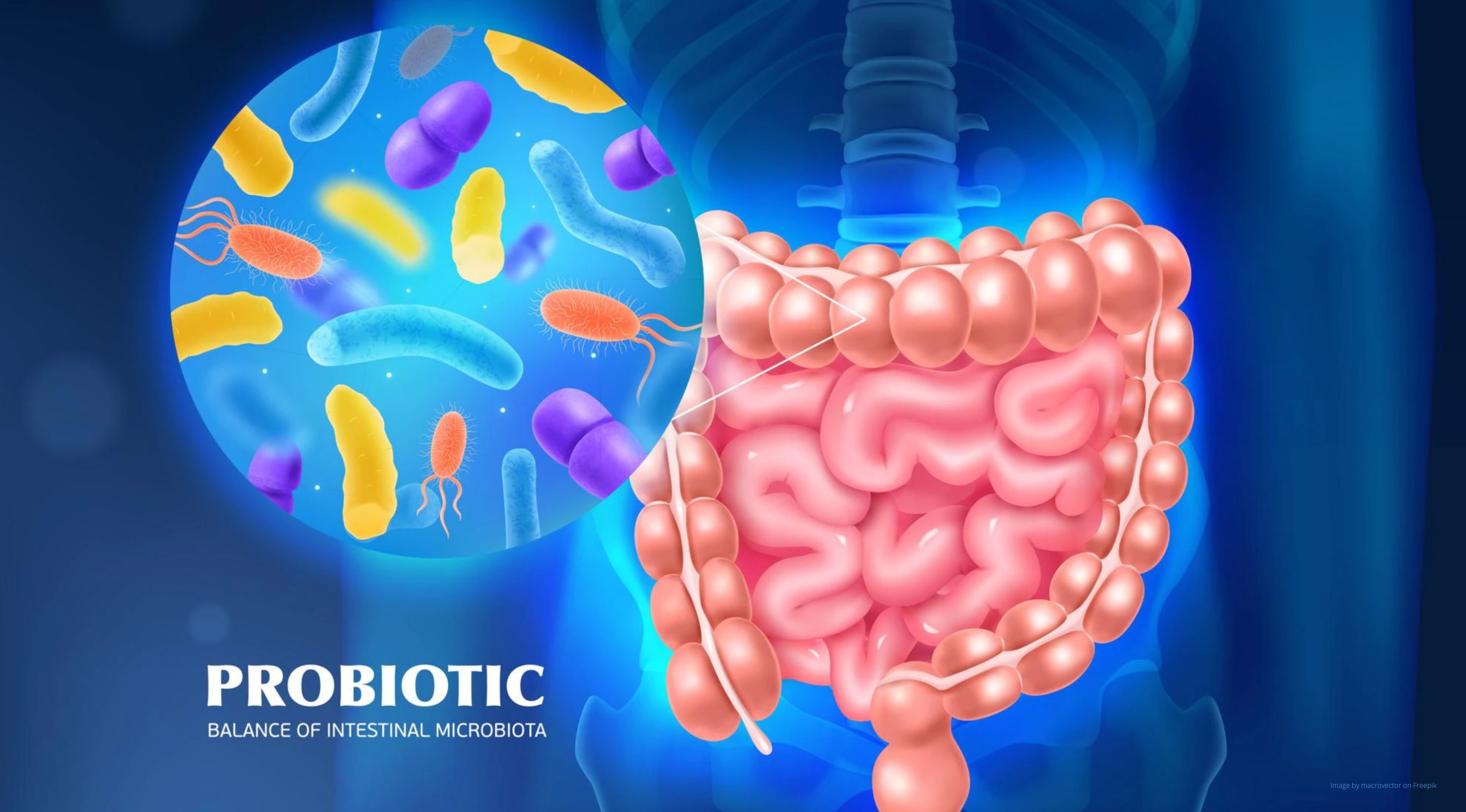Probiotics - how do they affect the body?

Emphasizing the importance of the gastrointestinal microbiota in the maintenance of health and in the pathogenesis of numerous chronic diseases (e.g. inflammatory bowel disease, irritable bowel syndrome, psychiatric disorders), its modification is now receiving tremendous attention. The composition of the gut microbiome is significantly influenced by probiotics, prebiotics, synbiotics, antibiotics and transplantation (transfer) of the gut microbiota.
- What are probiotics?
- Probiotics - properties
- Probiotics - application
- Probiotics - are they safe?
- Probiotics - when can they do harm?
What are probiotics?
Probiotics are live microorganisms that, when administered in adequate amounts, exert a beneficial health effect in the host body. Microorganisms with probiotic activity include, in particular, bacteria responsible for the production of lactic acid from the genera Lactobacillus (e.g. Lactobacillus acidophilus, Lactobacillus casei, Lactobacillus reuteri, Lactobacillus rhamnosus) and Bifidobacterium (e.g. Bifidobacterium animalis, Bifidobacterium infantis, Bifidobacterium longum, Bifidobacterium breve). It is worth mentioning that in April 2020, the taxonomy of microorganisms historically belonging to the genus Lactobacillus changed, and the following names are now used for several of the previously mentioned strains: Lacticaseibacillus casei, Limosilactobacillus reuteri, Lacticaseibacillus rhamnosus. Other microorganisms that we traditionally count as probiotics are the yeast Saccharomyces boulardii.
Probiotics - properties
It is necessary to emphasize that the properties of probiotics are mainly strain-dependent. This means that the results of experiments conducted with a specific strain cannot be presented as reliable evidence of the effectiveness of other, unverified strains of probiotic bacteria. As mentioned earlier, there is no single, common mode of action of probiotics, while we can generally distinguish three main mechanisms of their action:
-
Common to many genera: production of short-chain fatty acids, effect on intestinal transit, protection against colonization, normalization of the microbiome, competition with pathogenic microorganisms, effect on increased replacement of enterocytes (i.e., small intestinal epithelial cells).
-
Common to individual bacterial species: stabilization of the intestinal barrier, production of vitamins (B1, B7, B9 and K), metabolism of bile acid salts, direct antagonism, enzymatic activity, neutralization of carcinogens (i.e., external carcinogens).
-
Strain-specific: endocrine action, neurogenic action, modulation of immune response, production of specific bioactive substances.
Probiotics - application
The American Gastroenterological Association's 2020 guidelines for the use of probiotics in selected gastrointestinal diseases suggest supplementation with the following strains of probiotic bacteria (only those currently available in Poland are included):
- Saccharomyces boulardii_ to prevent infection with the pathogen
Clostridium difficile in adults and children taking antibiotics. - A combination of 8 strains of probiotic bacteria (L. paracasei DSM
24733, L. plantarum DSM 24,730, L. acidophilus DSM 24735, L.
delbrueckii subsp. bulgaricus DSM 24734, B. longum DSM 24736, B.
infantis DSM 24737, B. breve DSM 24732, S. thermophilus DSM 247) in
adults and children for the treatment of mucositis of the intestinal reservoir
intestinal tract(pouchitis). - L. rhamnosus GG ATCC 57103 and L. reuteri DSM 17938 for the following.
prevent necrotizing enterocolitis (NEC) in premature infants.
In contrast, current 2018 guidelines from the Polish Society of Gastroenterology suggest the use of single strains of probiotic bacteria or mixtures of probiotic strains tested for efficacy in the treatment of irritable bowel syndrome (IBS) to relieve both total symptoms and abdominal bloating and diarrhea. Among the recommended ones currently available are:
- Bifidobacterium infantis_ 35,624
- Lactiplantibacillus plantarum_ 299v
- Saccharomyces boulardii_ CNCM I-745
Probiotics - are they safe?
Probiotics are generally considered safe and well tolerated, as evidenced by their GRAS (Generally Recognized As Safe) status by the U.S. Food and Drug Administration (FDA) and Qualified Presumption of Safety (QPS) status in European Union countries. It is generally believed that the quality of probiotics that are registered as a drug or pharmaceutical preparation is far superior to those registered as dietary supplements. There are single-ingredient and multi-ingredient preparations available on the market, however, there is no conclusive evidence that the use of multi-strain preparations alone will result in much greater health and therapeutic benefits than those resulting from the use of single-strain preparations.
Probiotics - when can they do harm?
With the current state of knowledge , it is undoubtedly necessary to exercise extreme caution when introducing possible probiotic therapy in premature infants, immunocompromised patients and critically ill patients treated in the intensive care unit and those with a catheter inserted into large veins. The administration of preparations containing probiotic strains via jejunostomy may also be a risk factor for adverse reactions resulting from their use. Dozens of cases of fungemia in those receiving Saccharomyces boulardii and bacteremia in those receiving probiotic bacteria have also been reported in the professional literature. In light of current scientific evidence, however, it is believed that the risk of bacteremia infection is essentially negligible, and that the consumption of high-quality pharmaceutical preparations containing probiotics in healthy adults is completely safe.
Sources:
- Szajewska H.: Probiotics - current state of knowledge and recommendations for
clinical practice. Med. Prakt., 2017; 7-8: 19-37. - Rondanelli M, Faliva MA, Perna S, et al: Using probiotics in
clinical practice: where are we now? A review of existing
meta-analyses. Gut Microbes. 2017 Nov 2;8(6):521-543. - Khalesi S, Bellissimo N, Vandelanotte C, et al: A review of
probiotic supplementation in healthy adults: helpful or hype? Eur J
Clin Nutr. 2019 Jan;73(1):24-37. - Stavropoulou E, Bezirtzoglou E.: Probiotics in Medicine: A Long
Debate. Front Immunol. 2020 Sep 25;11:2192. - Szajewska H.: The role of probiotics in the prevention and treatment of diseases of the
of the gastrointestinal tract according to current guidelines. Med. Prakt., 2021;
1: 44-53.
 ⮜ Previous article
⮜ Previous article
Salidrosides from rhodiola rosea root - how do they work and what do you need to know about them?
 Next article ⮞
Next article ⮞